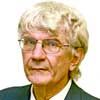If the French writer Max Stendhal (real name: Henri Beyle) were penning his masterpiece Le Rouge et le Noir now, he would undoubtedly title it Le Rouge et le Blanc in honour of today’s Champions League final between Liverpool and Tottenham. Or so at least is the opinion of this uncompromising Merseyside-born Liverpool fan.
The focus of this article will not be to preview today’s Civil War between North and South (of England). I could write volumes about the increasingly solid defence marshalled by Virgil van Dijk, the multi-pronged midfield hatched by Jürgen Klopp’s methodical brain and the lethal Afro-Brazilian trio up front (or perhaps Afro-Belgian today and not quite so deadly this year) but I fear that would only jinx the team. Since I read history at university (which was not my native Liverpool, I must confess), I will instead look at the years before that miraculous semi-final elimination of Lionel Messi’s Barcelona.
A miracle defying all logic but then that has been Liverpool’s story from the start. When Merseyside’s two main clubs are called Liverpool and Everton, you might logically think that the first of them automatically took the city’s name while the second had to find something else. Not so. Everton was founded in 1878, well before Liverpool in 1892 (exactly seven centuries after the port city was first chartered under Richard the Lionheart). The club’s founders were intent on calling it Everton Athletic but after several months of wrestling with copyright, they succumbed to the obvious and named it after the home town.
Joining the Football League in 1903, Liverpool won four titles in the first quarter of the century but then achieved little until Bill Shankly’s arrival in 1959 apart from winning the 1947 championship (when footballers were still playing on rations). In those decades of underachievement, the Merseyside clubs served to channel religious bigotry as much as anything else – my Liverpool Irish Grandma O’Hara was once heard to mutter: “There’ll be sad hearts in the Vatican tonight” when the Liverpool derby went the wrong way. Split down the middle in denominational terms – almost 40 percent Catholic when I was born there (Sefton Park) in mid-century and 51 percent accor - ding to t h e 2001 census due to a higher birth rate and lower emigration (Liverpool had almost a million people at the time of my birth and less than half that now) – the old rivalry between Catholic Everton and Protestant Liverpool was never as venomous as Glasgow’s Celtic-Rangers and has faded with both secularisation and the disintegration of the old neighbour - hoods like Scotland “Scottie” Road (heavily Irish despite the name), leaving Liverpudlians freer to identify according to denominational or territorial dividing-lines (like this scouse).
In political terms, the all-red strip favours Liverpool since the city is a Labour stronghold (shutting out the Tories completely since 1983). Over 200 Liverpudlians volunteered for the International Brigade in the Spanish Civil War (although Liverpool’s contradictions also included dozens of Catholics volunteering for General O’Duffy’s Irish Brigade to fight for Franco).
Anyway back to football and Shankly – immortalised by his most famous saying: “Some people believe football is a matter of life and death … it’s much more important than that” although my own favourite quip is (following a 5-0 thrashing of a lacklustre side): “We were lucky to get nil.” Shankly’s great merit was to restore Liverpool to the helm of English football even if with less of a haul than his dour successor Bob Paisley (three League titles, two FA Cups and a UEFA trophy as against Paisley’s six League titles, three European Cups and three League Cups in less than a decade). Those glory days were followed by the Heysel (1985) and Hillsborough (1989) stadium disasters in an era of player-managers – Kenny Dalglish and Graeme “You’ll never walk again” Souness (a past master at breaking rival legs without anybody noticing in pre-video ref days). Highlights of this century have been the 2001 treble and the 2005 Champions League Cup (overcoming a three-goal deficit just like last month against Barcelona), followed by bleaker years until recently.
But more than the managers it is the players who stand out in a personal memory stretching back over half a century. Often gritty like Souness or Jamie Carragher and sometimes pretty like the elegant wingers John Barnes and Stevie Heighway or the classy centre-back Alan Hansen and the creative Steve McManaman. From just down the road like Toxteth-born Robbie Fowler and Steven Gerrard or from nearby Wales like Emlyn Hughes or Ian Rush (the club’s top scorer with 346 goals) and from as far afield as Zimbabwe (the slightly demented goalie Bruce Grobbelaar) and Uruguay (Luis Suárez). My earliest idols would be Roger Hunt and goalie Ray Clemence (the Liverpool legend who also figures in the Tottenham Hotspur Hall of Fame) from the Shankly years, followed by the Kevin Keegan-John Toshack duo and Ray Kennedy (the winner of three European Cups). A list to which dozens of names could be added.
Should Tottenham win today, I would be happy for them and my Times mate James – after all, the poor barmisods have never even reached a top-level European final while we have European Cups galore (five) with the Premier League (for which 97 points would have more than sufficed through to last year) the one we really want and need. But deep down I cannot believe that we will be frustrated in the Champions League final two years running.



















Comments